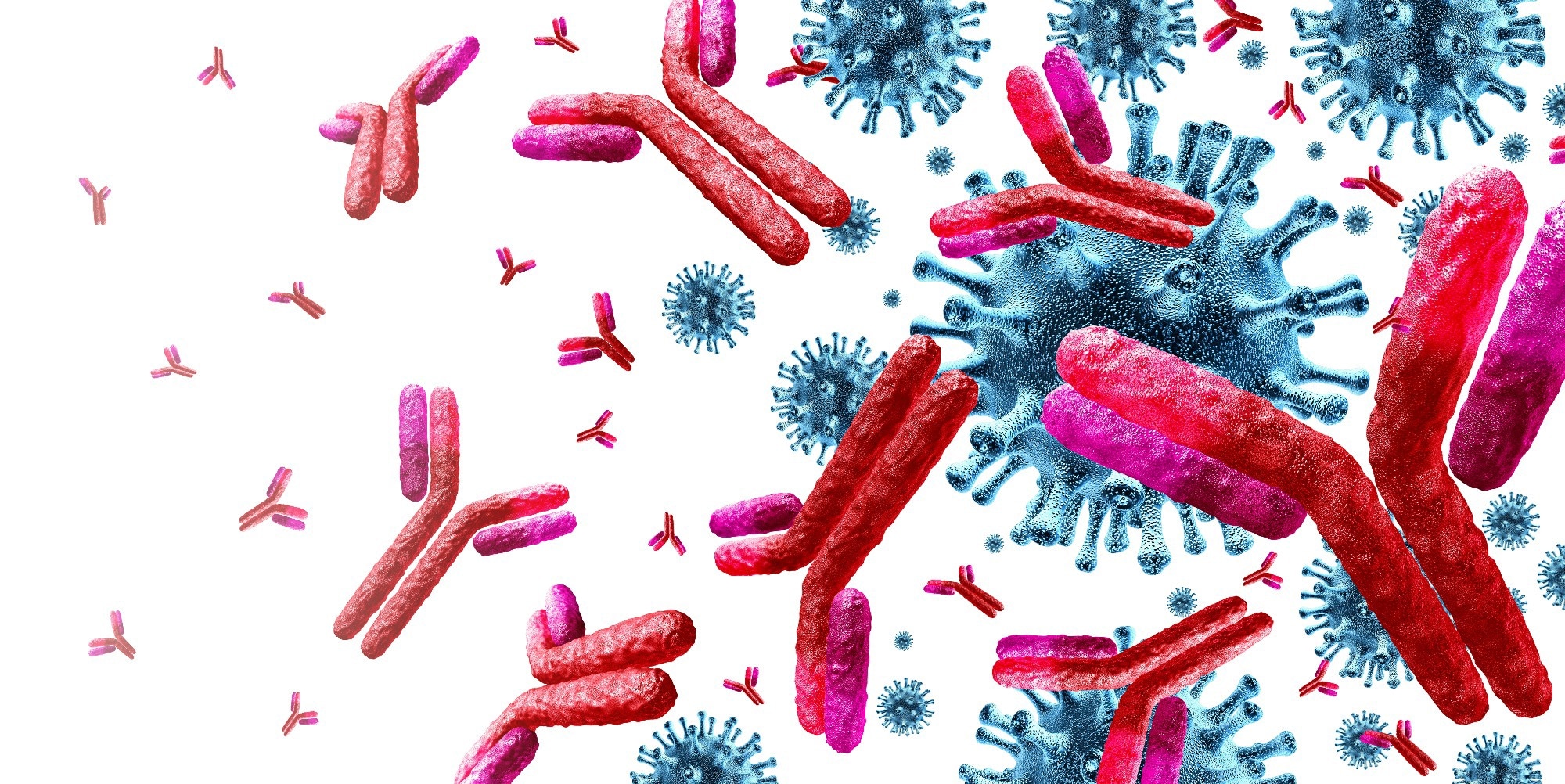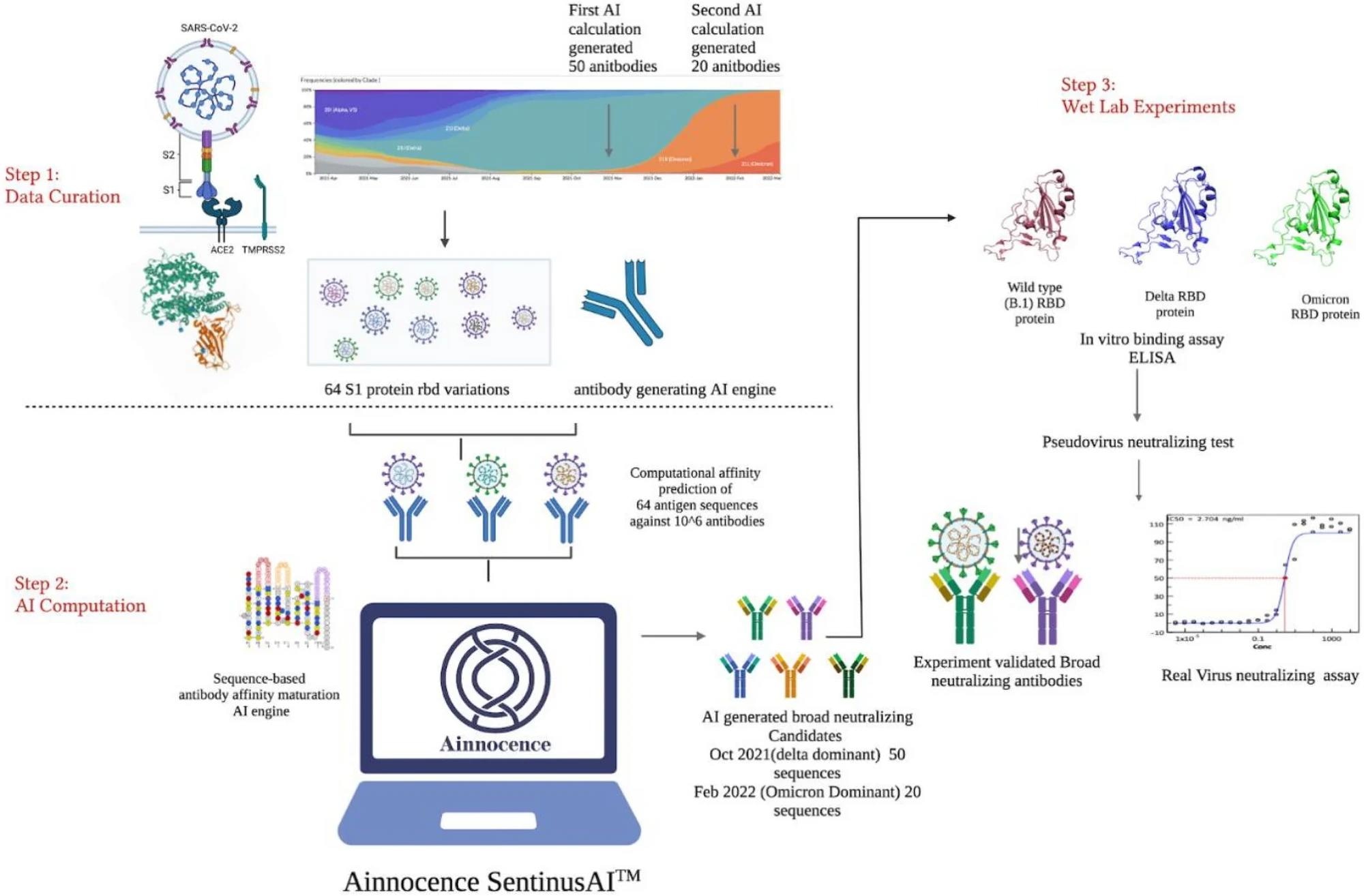Scientists harnessed AI to create mutation-resistant antibodies that outperformed conventional drug design, offering a powerful new tool against fast-evolving viruses like SARS-CoV-2.
 Study: AI designed, mutation resistant broad neutralizing antibodies against multiple SARS-CoV-2 strains. Image Credit: Lightspring / Shutterstock
Study: AI designed, mutation resistant broad neutralizing antibodies against multiple SARS-CoV-2 strains. Image Credit: Lightspring / Shutterstock
In a recent study in the journal Scientific Reports, researchers tested and leveraged several cutting-edge technologies, including machine learning, protein structural modeling, natural language processing, and protein sequence language modeling, to computationally design antibodies capable of neutralizing more than 1,300 SARS-CoV-2 strains (including mutants). The design encompassed 64 key mutations in the spike protein’s receptor binding domain (RBD), focusing on this critical region for viral entry. The antibody templates used were CR3022, Casirivimab (Regen 10,933), and Imdevimab (Regen 10,987), which are well-known monoclonal antibodies against coronaviruses.
Study findings demonstrated strong reactivity between the novel antibodies and SARS-CoV-2 strains, including Delta (10 antibodies) and Omicron (1 antibody). Notably, 14% of the first batch of antibodies and 40% of the second batch demonstrated “triple cross-binding,” meaning they bound to the receptor binding domain (RBD) of wild-type, Delta, and Omicron strains in ELISA assays. Notably, the present approach was shown to be much more time and cost-effective than traditional structure-based approaches. It may revolutionize future drug design and development, particularly for fast-evolving pathogens that require frequent modifications to account for their rapid mutation rates. However, while the study showed adaptability by reacting to the emergence of Omicron with a second round of antibody design, its predictive capability for completely new and unknown future variants is still speculative and was not directly demonstrated.
Background
The severe acute respiratory syndrome coronavirus 2 (SARS-CoV-2) that caused the COVID-19 pandemic remains one of the worst in human history, claiming more than 7 million lives since its discovery in late 2019. Thankfully, government-enforced social distancing measures, in combination with widespread anti-COVID-19 immunization interventions, substantially curbed disease spread.
Unfortunately, SARS-CoV-2 is a rapidly evolving family of viruses, and novel strains resistant to previously approved antibody therapeutics have now emerged. A classic example of this is the resistance demonstrated by strains B.1.427 and B.1.429 to bamlanivimab and etesevimab due to their L452R substitutions.
While ongoing research races to keep up with the origins of novel, increasingly resistant SARS-CoV-2 strains, traditional antibody discovery approaches are labor-intensive, inefficient, and expensive. Leveraging recent computational and technological advances in artificial intelligence (AI) models, such as graph neural networks (GNNs) and language-based networks (natural language processing architectures), may allow researchers to design and screen antibodies faster and more efficiently than ever before.
About the study
The present study aims to assess the viability of AI-based approaches to modeling antibody-antigen binding and screening for antibodies with broad-spectrum neutralizing capabilities. It demonstrates the application of AI models in rapidly discovering therapeutics to counter future pandemics and highlights their potential across medical fields.
“Our study describes using a deep learning model to computationally design effective and broad-spectrum mutations against various strains of the virus’ spike protein, and subsequent wet-lab experimentation confirms the findings.”
The study developed several in-house ‘antibody affinity maturation AI models’. These models were based on both GNN and language-based network architectures. The GNN architecture specifically enabled modeling of the relationships between amino acid residues as a graph, capturing both local and global sequence features relevant to antibody-antigen binding. All models were trained using datasets obtained from four curated datasets: 1. SKEMPI database, 2. Observed Antibody Space, 3. Antibody-Bind (AB-Bind) database, and 4. UniProt.
Following training, model accuracy and performance were evaluated using a combined dataset synthesized from SKEMPI and AB-Bind databases. Accuracy and scalability were assessed using a ‘leave-5-out’ (L5O) approach.
COVID-19 neutralizing antibodies were identified by first collating GISAID Database data (1300 SARS-CoV-2 strains), selecting templates for in silico cross-binding antibody assays, and generating in silico mutant libraries (mutations in the template). Machine learning models were then used to discover antibodies with broad-spectrum binding to several of the 1,300 supplied SARS-CoV-2 strains. Since the S1 protein is essential for antigen-antibody binding, antibodies that were resistant to mutations in viral S1 proteins (low-to-no reduced binding efficacy) were identified.
Wet lab assays (enzyme-linked immunosorbent assays [ELISAs] and coronavirus cytotoxicity assays) were subsequently carried out to validate computational findings experimentally. After the emergence of Omicron, the researchers performed a second round of computational antibody design to further improve antibody affinity specifically against Omicron, demonstrating the reactive adaptability of their approach to newly arising variants.
 SARS-CoV-2 cross-binding sequence selection and virus mutation data curation. Step 2: AI-based antibody binding prediction and cross-variants binding selection for potential candidate sequences for future variants. Step 3: Measurement of antibody’s binding ability using an ELISA-based assay; and measurement of antibody’s neutralizing capacity using neutralization and cytopathic effect (CPE) reduction assays.
SARS-CoV-2 cross-binding sequence selection and virus mutation data curation. Step 2: AI-based antibody binding prediction and cross-variants binding selection for potential candidate sequences for future variants. Step 3: Measurement of antibody’s binding ability using an ELISA-based assay; and measurement of antibody’s neutralizing capacity using neutralization and cytopathic effect (CPE) reduction assays.
Study findings
Evaluations of model accuracy (conducted using Spearman ranking coefficients) revealed that the graph-based model outperforms language-based approaches. Notably, both graph- and language-based models equaled or outperformed the current commercial (non-machine learning) structure-based approach – Discovery Studio.
“Unlike Discovery Studio, which employs a physical model derived from primary, secondary, and tertiary protein structure to compute binding affinity, our model learns the mapping between antibody sequence and binding affinity from a large amount of experimental data.”
The benefits of neural network results extended further, with the graph-based model (Pearson = 0.6) observed to outperform most conventional in silico approaches (Discovery Studio Pearson = 0.45).
Wet lab experiments confirmed these findings. The AI-designed antibody sequences with the highest predicted binding abilities were synthesized. Encouragingly, most of these antibodies were observed to bind and often reach an oversaturated state at higher concentrations to B.1, Delta, and Omicron SARS-CoV-2 strains.
Coronavirus cytopathic assays revealed 10 antibodies capable of neutralizing Vero E6 host cells infected with Delta strains and one antibody capable of neutralizing cells infected with Omicron strains. However, the study also found that strong binding in ELISA assays did not always correspond to neutralizing ability in cell-based assays, indicating that binding affinity alone does not guarantee neutralization. This discrepancy may be due to differences in the spike protein’s structure when plate-bound (ELISA) versus on live virus, as well as the specific epitope location and antibody conformation.
It is important to note that, while these results are promising, the study was limited to in vitro (laboratory) experiments. No in vivo (animal or human) efficacy studies were performed, and further research, such as epitope mapping and conformation dynamics studies, will be necessary for more precise antibody design and validation.
Additionally, while the study focused on achieving broad neutralization, the authors acknowledge that there may be a trade-off between broad cross-reactivity and therapeutic specificity, which could limit utility in some clinical contexts.
Conclusions
The present study highlights the benefits of leveraging AI-based structure-free deep neural networks for discovering and screening therapeutic antibodies. These computational models significantly outperformed traditional non-machine learning structure-based platforms in cost, efficiency, and accuracy. AI models have the added benefit of iteratively improving initially discovered antibodies to compensate for mutations in rapidly evolving pathogens.
“Because our approach combines flexibility and high-throughput at a low computational cost, it can be beneficial in other applications of the technology as well.”